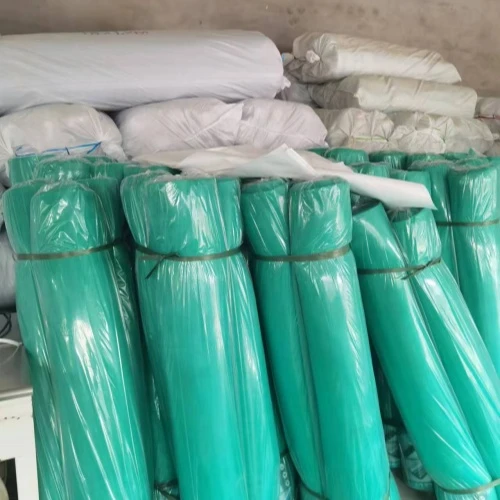-
 Afrikaans
Afrikaans -
 Albanian
Albanian -
 Amharic
Amharic -
 Arabic
Arabic -
 Armenian
Armenian -
 Azerbaijani
Azerbaijani -
 Basque
Basque -
 Belarusian
Belarusian -
 Bengali
Bengali -
 Bosnian
Bosnian -
 Bulgarian
Bulgarian -
 Catalan
Catalan -
 Cebuano
Cebuano -
 China
China -
 Corsican
Corsican -
 Croatian
Croatian -
 Czech
Czech -
 Danish
Danish -
 Dutch
Dutch -
 English
English -
 Esperanto
Esperanto -
 Estonian
Estonian -
 Finnish
Finnish -
 French
French -
 Frisian
Frisian -
 Galician
Galician -
 Georgian
Georgian -
 German
German -
 Greek
Greek -
 Gujarati
Gujarati -
 Haitian Creole
Haitian Creole -
 hausa
hausa -
 hawaiian
hawaiian -
 Hebrew
Hebrew -
 Hindi
Hindi -
 Miao
Miao -
 Hungarian
Hungarian -
 Icelandic
Icelandic -
 igbo
igbo -
 Indonesian
Indonesian -
 irish
irish -
 Italian
Italian -
 Japanese
Japanese -
 Javanese
Javanese -
 Kannada
Kannada -
 kazakh
kazakh -
 Khmer
Khmer -
 Rwandese
Rwandese -
 Korean
Korean -
 Kurdish
Kurdish -
 Kyrgyz
Kyrgyz -
 Lao
Lao -
 Latin
Latin -
 Latvian
Latvian -
 Lithuanian
Lithuanian -
 Luxembourgish
Luxembourgish -
 Macedonian
Macedonian -
 Malgashi
Malgashi -
 Malay
Malay -
 Malayalam
Malayalam -
 Maltese
Maltese -
 Maori
Maori -
 Marathi
Marathi -
 Mongolian
Mongolian -
 Myanmar
Myanmar -
 Nepali
Nepali -
 Norwegian
Norwegian -
 Norwegian
Norwegian -
 Occitan
Occitan -
 Pashto
Pashto -
 Persian
Persian -
 Polish
Polish -
 Portuguese
Portuguese -
 Punjabi
Punjabi -
 Romanian
Romanian -
 Russian
Russian -
 Samoan
Samoan -
 Scottish Gaelic
Scottish Gaelic -
 Serbian
Serbian -
 Sesotho
Sesotho -
 Shona
Shona -
 Sindhi
Sindhi -
 Sinhala
Sinhala -
 Slovak
Slovak -
 Slovenian
Slovenian -
 Somali
Somali -
 Spanish
Spanish -
 Sundanese
Sundanese -
 Swahili
Swahili -
 Swedish
Swedish -
 Tagalog
Tagalog -
 Tajik
Tajik -
 Tamil
Tamil -
 Tatar
Tatar -
 Telugu
Telugu -
 Thai
Thai -
 Turkish
Turkish -
 Turkmen
Turkmen -
 Ukrainian
Ukrainian -
 Urdu
Urdu -
 Uighur
Uighur -
 Uzbek
Uzbek -
 Vietnamese
Vietnamese -
 Welsh
Welsh -
 Bantu
Bantu -
 Yiddish
Yiddish -
 Yoruba
Yoruba -
 Zulu
Zulu
hail net for apple
The Importance of Hail Nets for Apple Orchards
In the world of fruit cultivation, particularly for apples, the threat posed by weather extremes cannot be overstated. Hail, a form of precipitation consisting of balls or irregular lumps of ice, can wreak havoc on crops, causing significant financial losses for farmers. As climatic conditions become increasingly unpredictable due to climate change, apple growers are increasingly turning to innovative solutions to protect their orchards. One such solution is the installation of hail nets, which have proven to be a game-changer in preserving the quality and yield of apple crops.
Hail nets are essentially protective covers made from high-density polyethylene fabric. These nets are designed to be strong enough to withstand the impact of falling hailstones while allowing sunlight and rain to pass through, ensuring that the trees receive the necessary elements for growth and fruit production. The implementation of hail nets in apple orchards provides numerous benefits, not just in protecting the fruit from hail damage, but also in enhancing the overall health of the trees.
The Importance of Hail Nets for Apple Orchards
Moreover, hail nets can also provide an additional layer of protection against other environmental conditions. For instance, they help shield apple trees from strong winds and heavy rains, which can also cause physical harm to the trees and fruit. This protective barrier ensures that apple growers can maintain the health of their orchards throughout various weather events. Furthermore, hail nets can help in reducing the risk of sunburn on fruits, a common issue when apples are exposed to direct sunlight for prolonged periods.
hail net for apple

In addition to protecting crops, hail nets can contribute to improved pest and disease management. By creating a barrier, these nets can limit the entry of harmful insects and reduce the spread of certain diseases that thrive in open environments. Many growers have noted a decrease in pesticide use as a result of implementing hail nets, leading to more environmentally friendly agricultural practices. This aligns with the growing consumer demand for sustainably grown produce, which can provide a competitive edge for apple growers in the market.
However, the use of hail nets is not without its challenges. The initial investment for purchasing and installing these nets can be considerable, and maintenance requires ongoing attention to ensure that they remain effective. Additionally, growers must consider the logistics of netting their orchards, including how to manage the nets during the harvest season and ensuring they do not obstruct pollinators.
Despite these challenges, the benefits of using hail nets for apple orchards often outweigh the drawbacks. As the climate continues to change and the incidence of severe weather events increases, the adoption of protective measures like hail nets will become increasingly important for apple growers aiming to safeguard their investments and ensure the quality of their produce.
In conclusion, hail nets represent an effective solution to one of the most pressing challenges faced by apple growers today. By providing a protective barrier against hail and other adverse weather conditions, these nets not only help to maintain crop yields but also support more sustainable farming practices. As apple cultivation continues to evolve in response to climate variability, the role of hail nets will likely become more prominent, making them an essential consideration for future orchard management strategies.
-
Shipping Plastic Bags for Every NeedNewsJul.24,2025
-
Safety Netting: Your Shield in ConstructionNewsJul.24,2025
-
Plastic Mesh Netting for Everyday UseNewsJul.24,2025
-
Nylon Netting for Every UseNewsJul.24,2025
-
Mesh Breeder Box for Fish TanksNewsJul.24,2025
-
Expanded Steel Mesh Offers Durable VersatilityNewsJul.24,2025











